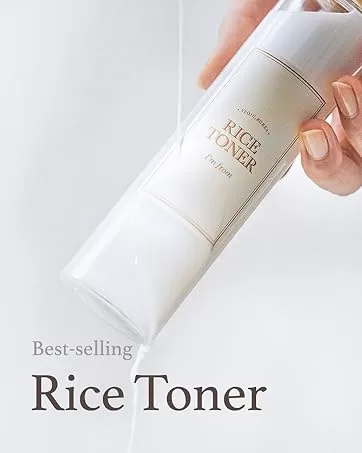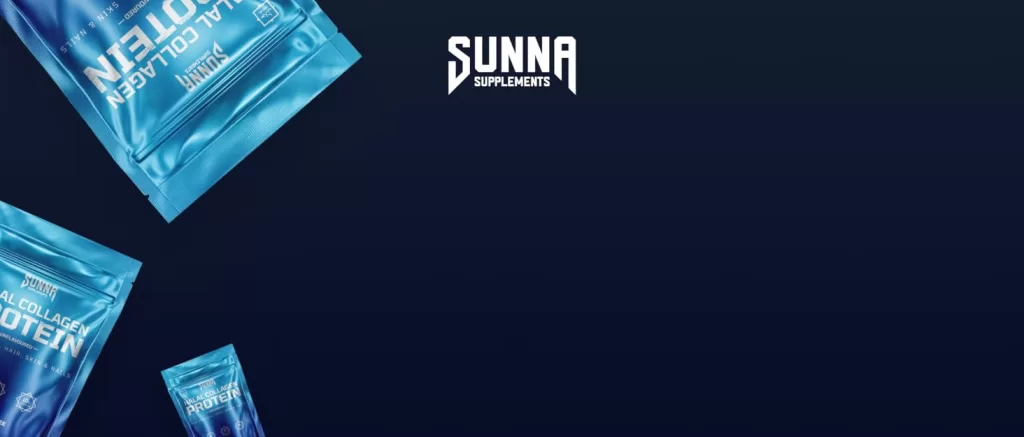The Truth About DIY Skincare Risks
DIY skincare risks: DIY skincare has taken social media by storm, with influencers promoting homemade masks, scrubs, and serums using kitchen ingredients. While natural remedies sound appealing, they can do more harm than good. Some of these “miracle” ingredients may cause irritation, burns, or long-term skin damage. Dermatologists warn against certain viral trends, and it’s essential to know safer alternatives for healthy, glowing skin.
Why Some Natural Ingredients Can Harm Your Skin
Many assume natural means safe, but that’s not always true. Some popular DIY skincare hacks can cause more harm than good. Understanding these DIY skincare risks can help you avoid skin irritation, allergic reactions, and long-term damage.
1. Lemon Juice: A Major DIY Skincare Risk
- Why it’s harmful: Lemon juice has a pH of around 2, which is too acidic for the skin. It can strip away natural oils, leading to dryness, irritation, and burns. Plus, it contains psoralens, compounds that make your skin more sensitive to the sun. This can cause severe sunburns, hyperpigmentation, and long-term skin damage.
- Safer alternative: If you’re looking for skin brightening, use vitamin C serums that are properly formulated to be pH-balanced and stable.
Why is Using a Vitamin Serum Beneficial for the Epidermis?
The epidermis, the outermost layer of our skin, serves as a vital shield against environmental aggressors. This barrier relies on a complex mix of nutrients, including 23 essential vitamins, to remain resilient and perform effectively. Here’s why a vitamin serum can enhance the health of your epidermis:
- Nutrient Delivery: A well-formulated vitamin serum provides these crucial vitamins—such as A, B, C, D, and E—in optimal concentrations. This ensures that your skin absorbs all the benefits needed for robust health.
- Non-Irritating: Unlike some topical treatments that can cause irritation, a high-quality vitamin serum is designed to be gentle, making it suitable for daily use. This means you can nourish your skin without worrying about adverse reactions.
- Comprehensive Skin Support: Each vitamin plays a unique role in skin health. For example, Vitamin C boosts collagen production, while Vitamin E acts as a powerful antioxidant. A serum that includes a range of vitamins can offer all-encompassing support, promoting firmness, elasticity, and a radiant complexion.
Using a vitamin serum can thus be a simple yet powerful way to maintain and enhance the natural protective functions of your epidermis.

2. Baking Soda: One of the Most Overlooked DIY Skincare Risks
- Why it’s harmful: Baking soda has a pH of about 9, which is too alkaline for the skin (which naturally sits around pH 4.5-5.5). Regular use can weaken the skin barrier, leading to redness, irritation, and increased sensitivity.
- Safer alternative: Try kaolin clay or oat powder, both of which cleanse the skin gently without disrupting its pH.
3. Toothpaste for Pimples: A Viral Trend with Hidden Risks
- Why it’s harmful: Toothpaste contains menthol, hydrogen peroxide, and baking soda, which may dry out a pimple but can irritate the surrounding skin, causing peeling, redness, and even chemical burns.
- Safer alternative: Use a spot treatment with salicylic acid or benzoyl peroxide to target pimples without damaging your skin.
4. Cinnamon: Potential for Severe Irritation
- Why it’s harmful: Some viral skincare hacks suggest using cinnamon for acne, but cinnamon is a potent irritant. It can cause burning, swelling, and contact dermatitis, especially for sensitive skin.
- Safer alternative: Use honey mixed with green tea extract, which has anti-inflammatory and antibacterial properties without irritation.
5. Egg Whites: Risk of Bacterial Infection
- Why it’s harmful: Raw eggs can carry Salmonella, which poses a risk if applied to broken or sensitive skin. They also offer no scientifically proven skin benefits.
- Safer alternative: Instead of egg whites, use hydrating masks with hyaluronic acid or aloe vera to tighten and plump the skin safely.
6. Apple Cider Vinegar: A Dangerous DIY Skincare Mistake
- Why it’s harmful: Undiluted apple cider vinegar (ACV) is extremely acidic and can cause chemical burns and permanent skin damage.
- Safer alternative: If you need a toner, try rose water or diluted green tea, which offer soothing and antibacterial properties.
How Choosing the Right Products for Your Skin Type Prevents Adverse Side Effects
Selecting products tailored to your skin type plays a critical role in minimizing unwanted side effects. Here’s why it matters:
- Understanding Your Skin Type: The first step is identifying your skin type, whether it’s oily, dry, sensitive, or a combination. This understanding helps you pick products specifically designed for your skin’s needs.
- Avoiding Irritation and Breakouts: Each skin type reacts differently to certain ingredients. For instance, oily skin might benefit from products containing Bentonite clay, which helps to control excess oil. Conversely, using such products on dry skin can lead to irritation and further dryness.
- Preventing Allergic Reactions: Using unsuitable products can trigger allergic reactions or conditions like contact dermatitis. By choosing appropriate skincare solutions, you minimize the risk of these uncomfortable side effects.
- Adapting to Changes: As time passes, your skin’s characteristics might change due to factors like age, weather, and lifestyle. Regular reassessment of your skin type ensures that your skincare routine evolves alongside these changes, continuously preventing adverse effects.
In summary, matching skincare products with your skin type mitigates the risk of irritation, breakouts, and other negative reactions, leading to healthier, more balanced skin.

How Does Diet Impact Skin Health, Particularly in Relation to Dairy Consumption?
Your diet plays a crucial role in skin health, acting as a fundamental component of your body’s overall well-being. One of the diet’s most influential aspects is the consumption of dairy products. These foods can have a unique impact on skin health, primarily due to how they interact with your body.
The Role of Dairy
Dairy products, such as milk, cheese, and yogurt, can be notoriously challenging for the body to process. They are known to produce mucus and can be difficult to digest for many individuals. This difficulty arises because dairy can mimic and influence the body’s natural hormones. These hormonal changes might lead to increased oil production on the skin’s surface, setting the stage for unwanted acne breakouts.
Acne and Dairy Connection
When the body struggles to digest dairy, it may manifest in the form of cystic acne, characterized by painful, hard bumps beneath the skin. This is particularly noticeable around the chin and jawline, where acne is more prone to developing due to its association with hormone fluctuations. In people who are lactose intolerant or sensitive to dairy, these issues may be more pronounced.
Managing Dairy-Induced Skin Issues
If you suspect that dairy is affecting your skin, consider moderating your intake. Opt for alternatives like plant-based milks or lactose-free products, which may help reduce flare-ups. While dietary adjustments can aid in managing skin health, consulting with a healthcare professional can provide personalized advice tailored to your specific needs.
In essence, while your skin serves as an excretory system to rid your body of substances it cannot process, a mindful diet can help maintain clear and healthy skin.
Dermatologists Debunk Viral Skincare Hacks
Not all social media beauty trends are safe. Dermatologists warn that some DIY skincare risks can lead to scarring, inflammation, and permanent damage.
DIY Sunscreen One of the Biggest DIY Skincare Risks
The Importance of Sun Protection in a Skincare Routine
- Sun protection is a cornerstone of any effective skincare routine, and its importance cannot be overstated. Here are several reasons why it is crucial, backed by expert opinions and scientific evidence:
Prevention of Skin Cancer
- Expert Backing: The American Academy of Dermatology (AAD) emphasizes that regular use of sunscreen can significantly reduce the risk of developing skin cancers, including melanoma, which is the most deadly form of skin cancer.
- Scientific Evidence: UV radiation from the sun is a known carcinogen. Prolonged exposure without protection can lead to DNA damage in skin cells, increasing the risk of cancerous mutations.
Prevention of Premature Aging
- Expert Backing: Dermatologists consistently highlight that up to 90% of visible skin aging is caused by sun exposure. This includes wrinkles, fine lines, and loss of elasticity.
- Scientific Evidence: UV rays break down collagen and elastin fibers in the skin, leading to sagging and wrinkling. Sunscreen helps to preserve these essential proteins, maintaining skin’s youthful appearance.
Protection Against Hyperpigmentation
- Expert Backing: Sun exposure can exacerbate conditions like melasma and post-inflammatory hyperpigmentation. Dermatologists recommend daily sunscreen use to prevent dark spots and uneven skin tone.
- Scientific Evidence: UV radiation stimulates melanocytes, the cells responsible for producing pigment. This can lead to the formation of dark spots and an uneven complexion.
Maintenance of Skin Barrier Function
- Expert Backing: The skin barrier can be compromised by UV exposure, leading to increased sensitivity and dryness. Sunscreen helps to protect this barrier, keeping the skin hydrated and resilient.
- Scientific Evidence: UV rays can deplete the skin’s natural lipids and proteins, which are essential for maintaining a healthy barrier. Sunscreen acts as a shield, preserving these vital components.
- Methods of Sun Protection
- There are several methods to protect your skin from the harmful effects of the sun, each with its own benefits:
Broad-Spectrum Sunscreen
- What It Is: Broad-spectrum sunscreens protect against both UVA (aging) and UVB (burning) rays.
- How to Use: Apply a generous amount (about a teaspoon for the face and a shot glass for the body) 15-30 minutes before sun exposure. Reapply every two hours, or immediately after swimming or sweating.
- Expert Recommendation: The AAD recommends using a sunscreen with an SPF of 30 or higher for adequate protection.
Protective Clothing
- What It Is: Clothing with a high Ultraviolet Protection Factor (UPF) rating can provide excellent sun protection.
- How to Use: Wear long-sleeved shirts, pants, and wide-brimmed hats when spending extended time outdoors.
- Expert Recommendation: The Skin Cancer Foundation advises wearing UPF-rated clothing for additional protection, especially during peak sun hours (10 a.m. to 4 p.m.).
Sunglasses
- What It Is: Sunglasses with UV protection can shield the delicate skin around the eyes and prevent cataracts.
- How to Use: Choose sunglasses that block 100% of UVA and UVB rays.
- Expert Recommendation: The American Optometric Association recommends wearing UV-protective sunglasses to safeguard both your eyes and the surrounding skin.
Seek Shade
- What It Is: Staying in the shade, especially during peak sun hours, can significantly reduce UV exposure.
- How to Use: Use umbrellas, trees, or other shelters to avoid direct sunlight.
- Expert Recommendation: The World Health Organization (WHO) suggests seeking shade as a simple yet effective method to minimize sun exposure.
Avoid DIY Sunscreen
- Why It’s Dangerous: Homemade sunscreens often lack the necessary UV filters and are not tested for efficacy or safety. This can leave your skin vulnerable to sun damage.
- Expert Warning: The FDA and dermatologists strongly advise against using DIY sunscreens, as they do not provide reliable protection and can increase the risk of skin cancer and premature aging.
Conclusion
- Incorporating sun protection into your daily skincare routine is essential for maintaining healthy, youthful skin and preventing serious health issues like skin cancer. By using broad-spectrum sunscreen, wearing protective clothing, seeking shade, and avoiding DIY sunscreens, you can effectively shield your skin from the harmful effects of UV radiation. Always consult with a dermatologist to tailor your sun protection strategy to your specific skin type and needs.
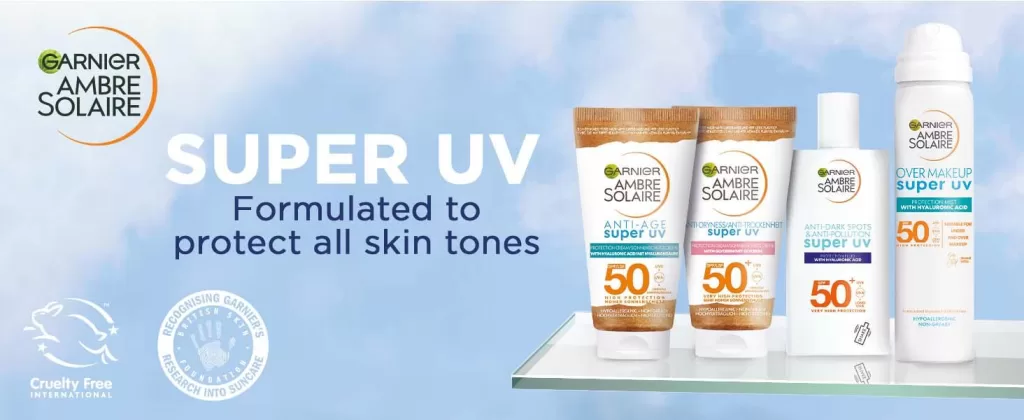
Pore Strips with Glue? A Skin Disaster Waiting to Happen
Why Glue is Harmful
Clogging Pores:
- Mechanism: Glue is not formulated for skin use and can seep into pores, causing blockages that lead to more blackheads and acne.
- Expert Opinion: Dermatologists warn against using non-skin-safe adhesives, as they can disrupt the skin’s natural balance.
Skin Irritation:
- Mechanism: The chemicals in glue can cause redness, itching, and irritation, especially for those with sensitive skin.
- Expert Opinion: The AAD advises against using household products like glue on the skin due to the risk of irritation and allergic reactions.
Damage to Skin Barrier:
- Mechanism: Removing glue can strip away the skin’s natural oils and damage the protective barrier, leading to increased sensitivity and dryness.
- Expert Opinion: Damaging the skin barrier can make it more susceptible to environmental aggressors and infections.
Safe Alternatives for Clearing Pores
Salicylic Acid (BHA):
- Mechanism: Salicylic acid is a beta hydroxy acid that penetrates oil to exfoliate inside pores, effectively clearing out blackheads and preventing new ones.
- Usage: Use a salicylic acid-based cleanser or toner 2-3 times a week, depending on your skin type.
Clay Masks:
- Mechanism: Clay masks absorb excess oil and draw out impurities from the pores.
- Usage: Apply a clay mask once a week to help keep pores clear and reduce oiliness.
Retinoids:
- Mechanism: Retinoids increase cell turnover, preventing the buildup of dead skin cells that can clog pores.
- Usage: Start with a low concentration and use it 2-3 times a week, gradually increasing frequency as your skin builds tolerance.
Professional Treatments:
- Options: Chemical peels, microdermabrasion, and laser treatments can provide deeper exfoliation and pore-clearing benefits.
- Consultation: Always consult with a dermatologist to determine the best treatment for your skin type and concerns.
Conclusion
- Sun protection is a non-negotiable part of any skincare routine, essential for preventing premature aging, reducing the risk of skin cancer, and maintaining overall skin health. Use a combination of sunscreen, protective clothing, and antioxidants to shield your skin from harmful UV rays. Avoid harmful DIY hacks like using glue for pore strips, and instead opt for safe, dermatologist-recommended methods like salicylic acid, clay masks, and retinoids to keep your pores clear and your skin healthy. Always consult with a skincare professional to tailor your routine to your specific needs.
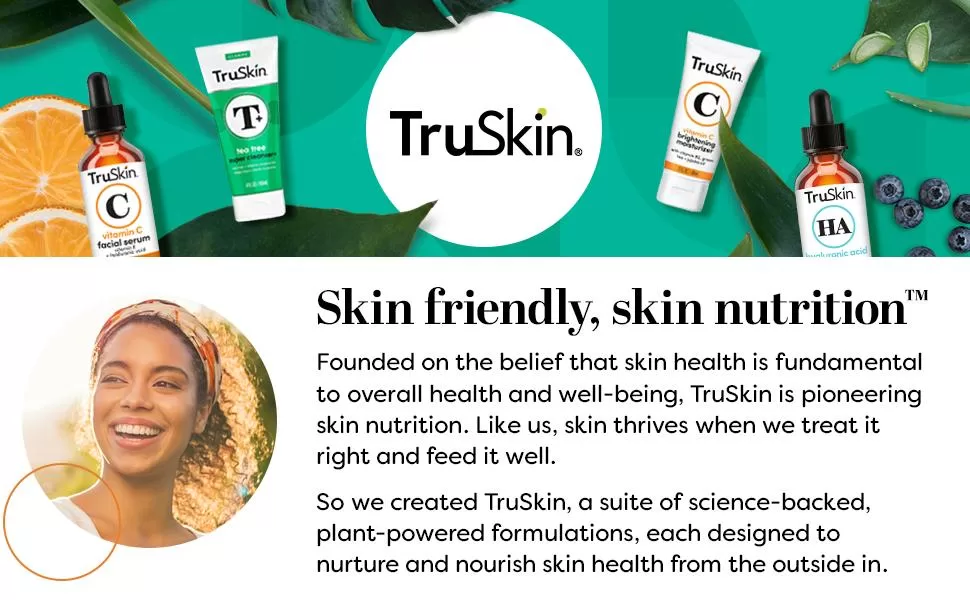
Ice Facials: Temporary Effects Only – A Comprehensive Analysis
Ice facials have gained popularity in skincare routines for their ability to provide immediate, albeit temporary, benefits. However, their effects are short-lived, and improper use can lead to adverse outcomes. Below is a detailed exploration of the topic, including expert opinions, potential risks, and alternative methods for achieving similar results.
Temporary Effects of Ice Facials
Reduction of Puffiness
Ice causes vasoconstriction (narrowing of blood vessels), which can temporarily reduce swelling and puffiness, particularly around the eyes. This effect is often sought after for a quick fix before events or photos.
Minimized Pores
The cold temperature can tighten the skin, making pores appear smaller. However, this is a temporary effect, as pores return to their normal size once the skin warms up.
Soothing Inflammation
Ice can calm irritated or inflamed skin, making it useful for conditions like acne or sunburn. The cooling sensation provides immediate relief but does not address the underlying cause of inflammation.
Brightening Effect
Improved blood circulation after the initial vasoconstriction can give the skin a temporary glow. However, this effect fades quickly.
Risks and Limitations of Ice Facials
Overuse and Skin Damage
Excessive use of ice can lead to redness, irritation, and even frostbite in extreme cases. Constricting blood vessels for too long can disrupt the skin’s natural barrier and impair its ability to heal.
Not a Long-Term Solution
Ice facials do not address underlying skin concerns like collagen production, hydration, or elasticity. Their effects are purely superficial and short-term.
Sensitivity Concerns
People with sensitive skin or conditions like rosacea may experience worsened symptoms due to the extreme temperature change.
Lack of Expert Endorsement
Dermatologists often caution against relying on ice facials as a primary skincare method. Dr. Whitney Bowe, a board-certified dermatologist, emphasizes that while ice can provide temporary relief, it is not a substitute for evidence-based skincare practices.
Alternative Methods for Similar Effects
For those seeking the benefits of ice facials without the risks, several alternatives provide more sustainable and skin-friendly results:
Cool Jade Rollers or Gua Sha Tools
These tools, when chilled, can reduce puffiness and improve circulation without the harshness of direct ice contact. They also promote lymphatic drainage, which helps detoxify the skin.
Chilled Aloe Vera Gel
Aloe vera has anti-inflammatory and hydrating properties. When chilled, it can soothe the skin, reduce redness, and provide a cooling effect similar to ice.
Cold Compresses or Cooling Masks
Using a damp cloth or a specially designed cooling mask can provide a gentler alternative to ice. These methods avoid the risk of frostbite while still reducing puffiness.
Cryotherapy Facials
Performed by professionals, cryotherapy facials use controlled cold temperatures to stimulate collagen production and improve skin tone. This method is more effective and safer than at-home ice facials.
Topical Products with Cooling Ingredients
Look for skincare products containing menthol, cucumber extract, or peppermint oil. These ingredients provide a cooling sensation and can help reduce inflammation.
Hydration and Diet
Long-term reduction of puffiness and improved skin health often come from internal factors. Staying hydrated, reducing salt intake, and consuming anti-inflammatory foods can have a more lasting impact.
Expert Recommendations
Dermatologists and skincare experts generally agree that while ice facials can be a quick fix, they should not replace a comprehensive skincare routine. Dr. Joshua Zeichner, a dermatologist in New York City, suggests that ice should be used sparingly and always wrapped in a cloth to prevent direct contact with the skin. He also recommends focusing on long-term solutions like retinoids, antioxidants, and sunscreen for sustained skin health.
Conclusion
Ice facials offer temporary benefits such as reduced puffiness, minimized pores, and a soothing effect. However, their overuse can lead to skin damage, and they are not a substitute for a well-rounded skincare regimen. Alternatives like jade rollers, chilled aloe vera gel, and professional cryotherapy provide safer and more effective options for achieving similar results. For long-term skin health, experts recommend focusing on evidence-based practices and addressing underlying skin concerns through proper hydration, diet, and skincare products.
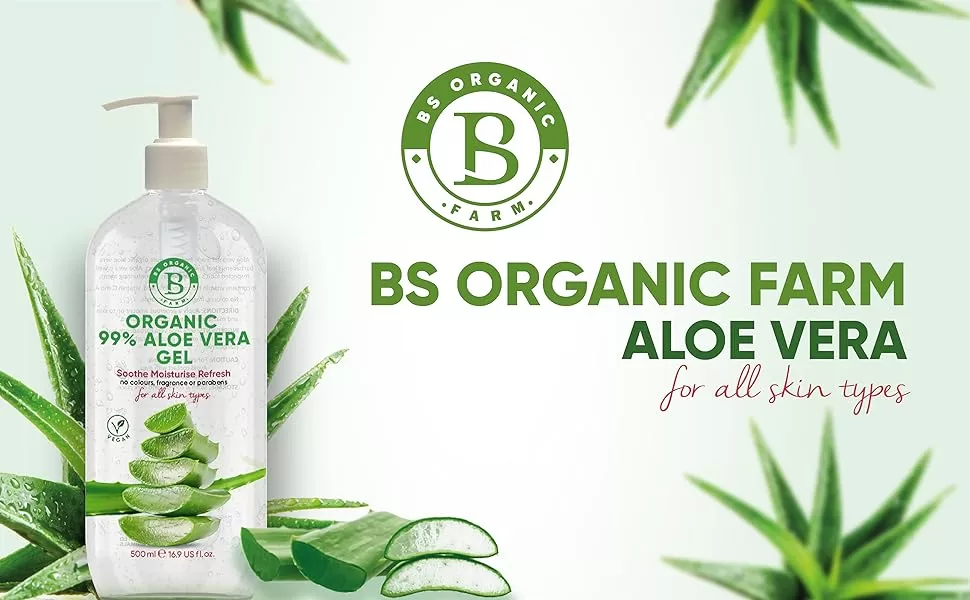
How Can Increasing Circulation Improve the Appearance of the Skin?
As we age, our skin often receives less oxygen and nutrients due to a reduction in blood circulation. This decreased flow results in dull, lifeless skin. Enhancing circulation can be a game-changer in revitalizing your complexion and improving skin health.
Boosting Blood Flow
- Increased Delivery of Oxygen and Nutrients:
- When blood flow is improved, more oxygen and essential nutrients reach the skin cells. This nourishment helps maintain skin vitality and encourages a more youthful appearance.
- Enhancing Natural Glow:
- An increase in circulation provides a rosy, natural glow, which can visibly lift and brighten your complexion. It delivers freshness to otherwise tired-looking skin.
Simple Techniques to Enhance Circulation
- Inverted Poses:
- Try hanging your head upside down for a few minutes daily. Whether through yoga poses like the downward dog or simply leaning over the side of your bed, this can effectively boost circulation to your face.
- Regular Exercise:
- Engaging in aerobic exercises like jogging or brisk walking promotes overall circulation, benefiting your entire body, including your skin.
- Facial Massage:
- Massaging your face gently with upward strokes can stimulate blood flow, delivering vital nutrients to the skin surface.
Long-term Benefits
Enhancing circulation isn’t just about short-term improvements. Over time, consistent efforts can lead to lasting changes in skin health, helping you maintain that inner glow and freshness.
Incorporating these habits can transform your skincare routine from basic to brilliant, ensuring your skin looks vibrant and energized at any age.
4. DIY Charcoal Masks Can Over-Dry Skin
- Why it’s risky: Some DIY recipes mix charcoal with glue, which can strip essential oils and damage skin cells.
Why Choose Non-Foaming Cleansers Over High-Foaming Ones?
Opting for non-foaming cleansers rather than high-foaming alternatives can greatly benefit your skin’s health. High-foaming cleansers often contain ingredients that can aggressively strip away natural oils. This can leave your skin feeling tight, dry, and more susceptible to developing breakouts.
The Risks of High-Foaming Cleansers
- Moisture Loss: Stripping natural oils can lead to a lack of moisture, a common precursor to dryness and irritation.
- Premature Aging: When skin is left unprotected and dry, it is more likely to form lines and wrinkles.
- Environmental Sensitivity: Over-cleansed skin can become more sensitive to external factors like pollution and weather conditions.
Advantages of Non-Foaming Cleansers
Non-foaming cleansers are formulated to clean without compromising the skin’s natural lipid barrier. This means:
- Maintained Moisture Balance: They help retain the skin’s natural oils, critical for a balanced and hydrated complexion.
- Reduced Irritation Risk: With less stripping, there’s a lower chance of irritation, making them suitable for sensitive skin types.
- Healthy Skin Barrier: By preserving the natural oils, non-foaming cleansers support an intact skin barrier, protecting against environmental damage.
Incorporating a gentle non-foaming cleanser into your skincare routine can promote a healthier, more resilient skin condition without the drawbacks associated with harsh, high-foaming products.
Choosing Self-Tanner Over Tanning Beds: Key Benefits
Using self-tanner rather than a tanning bed offers significant advantages, especially when considering skin health. Tanning beds can have detrimental effects due to their UV exposure, increasing the risk of skin damage and long-term health issues like cancer. Self-tanners, on the other hand, provide a safer alternative by giving you the sun-kissed look without the harmful rays.
Healthier Skin
Self-tanners protect your skin from UV radiation, which can cause premature aging and increase the likelihood of developing skin cancer. By opting for a self-tanner, you get the glow without the risks associated with tanning beds.
Variety of Options
Today’s market offers a wide range of self-tanners that cater to different skin types and preferences. Look for products with natural ingredients to avoid harsh chemicals and strong fragrances that might irritate sensitive skin. These eco-friendly options ensure you achieve a bronze look without compromising your health or the environment.
Convenience and Control
Another benefit of self-tanners is the convenience they offer. You can apply them at home and have complete control over the intensity of your tan. This allows for a gradual build-up to achieve your desired shade, unlike a tanning bed, where you have limited control over the results.
Cost-Effective Solution
Using self-tanners can be more budget-friendly compared to regular visits to a tanning salon. The variety of products available means there’s a price point for everyone, making it an affordable way to maintain a tan year-round.
In conclusion, self-tanners are a healthier, more flexible, and economical way to get a radiant tan without the negative side effects associated with tanning beds.

What Are the Benefits of Micro-needling for the Skin?
Micro-needling offers an array of benefits that can transform your skincare routine, making it a popular choice among dermatologists and skincare enthusiasts alike.
- Smooths Fine Lines: One of the primary advantages is its ability to minimize the appearance of fine lines, giving the skin a more youthful and refreshed look. This is achieved through the stimulation of collagen production, which naturally plumps the skin.
- Diminishes Scars: For those struggling with various types of scars, especially acne scars, micro-needling can soften their appearance. The tiny needles work to break down the texture of the scar tissue, leading to smoother skin over time.
- Enhances Skincare Product Efficacy: By creating micro-channels in the skin, micro-needling significantly boosts the absorption and performance of skincare products. This means your serums and moisturizers can penetrate deeper, delivering more effective results.
In summary, micro-needling is a multi-faceted procedure that not only targets fine lines and scars but also amplifies the effectiveness of your skincare products, leaving you with radiant, healthy-looking skin.
Why You Should Get a Full-Body Skin Exam by Age 30
Getting a full-body skin exam by the time you reach 30 is highly recommended. This screening, conducted by a dermatologist, focuses on detecting any unusual moles or skin changes that might indicate the early stages of skin conditions, including the most severe type of skin cancer, melanoma.
Early Detection Saves Lives
Melanoma is particularly concerning because, despite being the deadliest form of skin cancer, it has a high cure rate if caught early. This makes routine exams crucial. A dermatologist’s trained eye can spot subtle changes and detect potential issues before they escalate into more serious health concerns.
Learning Self-Examinations
Moreover, dermatologists do more than just examine your skin. They educate patients on conducting self-checks at home. This self-awareness empowers you to notice alterations in your skin promptly, adding another layer of defense against skin issues.
Regular Monitoring
Establishing a baseline for your skin with a professional allows for ongoing monitoring. Future changes in moles or skin texture can be compared against this baseline, making it easier to catch deviations early.
In summary, a full-body skin exam by age 30 is a proactive step towards maintaining your overall health. Early detection, coupled with education on self-examinations, significantly increases the chances of catching skin conditions when they’re most easily treatable.
Safe Alternatives for DIY Beauty Enthusiasts
If you love making skincare at home, there are safer, dermatologist-approved alternatives.
Hydrating & Soothing Oatmeal Face Mask
Ingredients:
- 1 tbsp ground oats (gentle exfoliation & hydration)
- 1 tsp honey (antibacterial & soothing)
- 2 tbsp Greek yogurt (moisturizing & probiotic benefits)
Directions:
- Mix all ingredients into a paste.
- Apply to clean skin and leave for 10-15 minutes.
- Rinse with lukewarm water and pat dry.
Why it works:
- Oats soothe inflammation,
- Honey has antibacterial properties,
- Greek yogurt provides mild exfoliation and hydration.
How Often Should You Exfoliate, and Why Is It Crucial?
Exfoliating twice a week is an optimal routine for maintaining radiant skin. It strikes a balance—preventing over-exfoliation while ensuring your skin gets the care it deserves.
Here’s why it matters:
- Minimizes Pores: Routine exfoliation helps to clear away dead skin cells and sebum that clog pores, giving your skin a smoother, more refined appearance.
- Reduces Fine Lines: By promoting cell turnover, exfoliation can soften the appearance of fine lines, maintaining a youthful look.
- Improves Skin Texture: Combining physical scrubs with ingredients like lactic acid enhances exfoliation, ensuring your skin feels fresh and resurfaces effectively.
By following this twice-weekly regimen, you can enjoy a healthier complexion without overstripping your skin.
Investing in a high-quality moisturizer is crucial for maintaining skin health due to its myriad benefits.
Strengthening the Skin Barrier
A top-notch moisturizer replenishes the lipids in your skin, bolstering its natural barrier. This barrier acts as a shield, protecting against harmful environmental factors and reducing the risk of irritation and damage.
Hydration and Nourishment
Moisturizers deliver essential hydration, quenching parched skin and preventing the dryness that can lead to discomfort and flakiness. Well-hydrated skin not only feels smoother but also glows with vitality.
Defense Against External Threats
By forming a protective layer on the skin’s surface, moisturizers help guard against pollutants and chemicals found in everyday environments. This is particularly important in urban areas where exposure to toxins is higher.
Key Benefits of Using a Quality Moisturizer
- Reduces the appearance of fine lines and wrinkles by maintaining skin elasticity.
- Enhances the skin’s texture, making it feel softer and more supple.
- Supports overall skin health, minimizing outbreaks or flare-ups of skin conditions.
In summary, a quality moisturizer is more than just a cosmetic product; it’s an essential component of any skincare routine that actively works to preserve and enhance your skin’s health.
The Vital Role of Hydration in Skin Health
Staying hydrated is essential for radiant, youthful skin. It’s not just about feeling quenched; it’s about keeping your skin cells functioning effectively.
Water is the fuel that powers your skin’s natural processes. Well-hydrated skin is better equipped to maintain elasticity, helping to reduce the appearance of lines and wrinkles. Neglecting hydration often leads to skin issues like roughness, flakiness, and dryness.
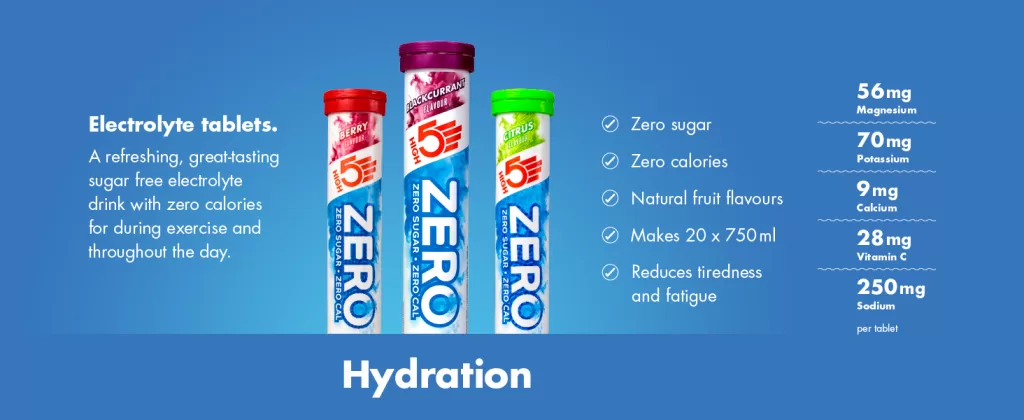
Consequences of Dehydration
When the skin lacks moisture, it becomes not just uncomfortable but visibly lackluster. Dehydrated skin often appears dull and uneven, with fine lines becoming more pronounced. This can ultimately lead to flaky, cracked, and itchy textures, making hydration a critical factor in your skincare routine.
Optimal Water Intake
To reap the full benefits of hydration, it’s recommended that women aim for about 2,200 ml of water daily, while men should target around 3,000 ml. Ensuring you meet these requirements can support your skin’s resilience and luminosity, keeping it looking healthy and vibrant.
By integrating these practices into your daily routine, you can transform your skin from the inside out.
How to Layer Skincare Products for Optimal Absorption
Properly layering skincare products is crucial to maximizing their benefits. Follow these simple guidelines to ensure each product is absorbed effectively and works its magic:
- Start with Clean Skin: Begin with a gentle cleanser to remove impurities, oils, and makeup. This sets a clean slate for the rest of your routine.
- Tone Your Skin: Next, apply a toner. This helps balance your skin’s pH and prepares it for better absorption of subsequent products.
- Apply Serums: Use lightweight serums first, as they contain active ingredients that penetrate deeply. Serums are typically water-based, making them thinner and ideal for early application.
- Layer on Essences: Following serums, apply essences. These are slightly thicker and help to hydrate and promote skin repair.
- Use Treatments: If you have any specific treatments, such as spot treatments or retinoids, this is their place in the lineup.
- Moisturize: Seal in all the applied layers with a moisturizer. Moisturizers are thicker and help to lock in hydration.
- Protect with Sunscreen (Morning Only): Never skip sunscreen during the day to protect against UV damage.
By following these steps and applying products from the thinnest to the thickest, you can enhance your skincare routine’s effectiveness and keep your skin radiant.
Why Are Regular Facials Recommended for Maintaining Healthy Skin?
Regular facials are a cornerstone of effective skincare. They dive deeper than anything you might do at home and offer multiple benefits that are crucial for a healthy complexion.
Professional Exfoliation
One of the key advantages of facials is professional exfoliation. This process removes dead skin cells more efficiently than at-home scrubs, allowing your skin to breathe and better absorb skincare products.
Effective Extraction
Facials also include expert extractions. These are essential for clearing clogged pores and preventing breakouts, which can sometimes be difficult to manage on your own without causing skin damage.
Personalized Skin Attention
When you visit a skincare professional, you receive personalized attention that targets your unique skin concerns. Whether it’s hydration, anti-aging, or acne treatment, a professional can tailor the treatment to suit your specific needs.
Enhanced Product Absorption
The thorough cleaning and exfoliation open up your pores, making it easier for high-quality products to penetrate your skin, ensuring you get the most out of your skincare routine.
Regular facials are more than just a luxury; they are an investment in your skin’s health. By integrating them into your routine, you pave the way to clear, vibrant skin.
How to Keep Your Skin Looking Youthful
Maintaining youthful skin involves more than just good genes and sunscreen. Here’s how you can care for your body skin to keep it looking fresh and youthful:
- Hydrate Regularly: Moisturize your skin daily to ensure it retains its natural moisture. Using a rich lotion or cream, especially after showering, can help lock in hydration.
- Avoid Overwashing: Resist the urge to wash your body with harsh soaps or excessive scrubbing. This can strip away essential oils, leaving your skin dry and accentuating fine lines.
- Opt for Gentle Cleansers: Choose products that maintain the skin’s natural moisture balance. Look for sulfate-free or hydrating body washes that cleanse without causing dryness.
- Exfoliate Wisely: Exfoliation can rejuvenate your skin by removing dead skin cells, but do it gently and not more than once or twice a week. Over-exfoliation can irritate and dry out your skin.
- Nurture with Nutrient-Rich Products: Incorporate creams or serums containing hyaluronic acid, glycerin, and ceramides. These ingredients work wonders in promoting moisture retention.
- Eat Skin-Nourishing Foods: Your diet plays a crucial role. Foods rich in omega-3 fatty acids, vitamins E and C, and antioxidants support skin’s elasticity and moisture.
Implement these practices into your skincare routine to prevent your skin from showing premature signs of aging.
A restful night’s sleep plays a crucial role in maintaining skin health. Think of your mind as a complex computer that requires nightly updates and maintenance to function optimally. During sleep, your body doesn’t just rest—it enters a regeneration phase, crucial for repairing skin cells and processing the day’s stresses.
Here’s why sufficient sleep is essential for glowing skin:
- Cellular Repair: Sleep allows your skin cells to rejuvenate. New cell production peaks, leading to a refreshed and revitalized appearance.
- Hormone Regulation: Adequate rest helps balance hormones that impact skin, including those responsible for oil production. This can reduce the occurrence of acne and other skin conditions.
- Collagen Production: Sleep supports the synthesis of collagen, a protein that enhances skin firmness and elasticity. This reduces wrinkles and retains youthful skin.
- Reduced Stress: Quality sleep helps lower stress levels, which can otherwise exacerbate skin issues like psoriasis and eczema.
In essence, getting seven to eight hours of sleep each night is like rebooting your computer—it’s essential for processing and refreshing your mind and body, leading to healthier skin.
To ensure your sheet mask fits like a dream and delivers optimal results, start by making a small cut from the side of the nose area towards the eye opening. This simple adjustment lets you maneuver the mask closer to the under-eye region, preventing any gaps or “tenting” that might occur.
If needed, you can also make an additional cut below the cheekbone. This allows you to overlap the mask slightly, enhancing its snugness against your skin. For the best adherence, consider using a mask with soothing ingredients like aloe vera, which can enhance the mask’s contact and comfort while delivering extra hydration.
This approach not only customizes the fit to your face but also maximizes the skincare benefits, ensuring every inch of your skin is treated.
Unlock the Power of Chamomile and Rosemary Baths for Dry, Sensitive Skin
If you’re struggling with dry, sensitive skin, a chamomile and rosemary bath could be your secret weapon. Here’s how these natural ingredients can help soothe and heal your skin:
Why Chamomile?
Chamomile is renowned for its calming properties. When used in a bath, it can help to reduce redness and irritation, providing immediate relief for sensitive skin. Its anti-inflammatory qualities make it an ideal choice for anyone dealing with eczema or similar conditions.
The Benefits of Rosemary
Rosemary isn’t just for cooking—it’s also a powerful herb for skin care. Its antioxidant properties help rejuvenate the skin, enhancing elasticity and reducing dry patches. Rosemary is also known for improving circulation, which aids in delivering nutrients to the skin’s surface.
How to Prepare the Bath
- Boil a large pot of water and add one cup each of chamomile tea leaves and rosemary.
- Simmer for 15 minutes to allow these herbs to release their beneficial compounds.
- Strain the mixture and add it to your bath water.
The Experience
Submerging yourself in this herbal bath will not only relax your mind but also work wonders on your skin. Many find that their skin feels softer and looks healthier after just one bath. For best results, adjunct regular use with your existing skincare routine to tackle stubborn dry patches and alleviate persistent redness.
With natural remedies like chamomile and rosemary, achieving well-nourished, calm skin becomes a straightforward and enjoyable process.
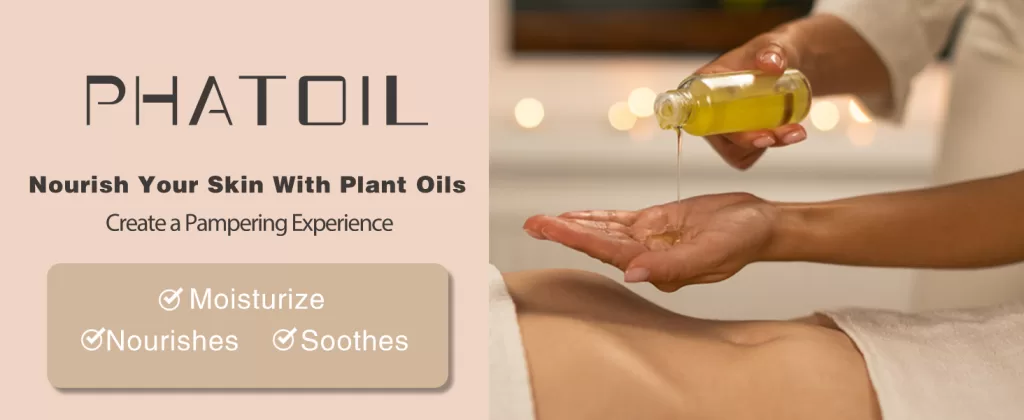
What Are Peptides and How Do They Reduce the Appearance of Lines and Crow’s-Feet?
Peptides are short chains of amino acids, which are the building blocks of proteins. In skincare, they’re celebrated for their ability to support skin health and vitality. These powerful molecules play a crucial role in maintaining the skin’s structural integrity.
How Do Peptides Work?
When applied topically, peptides can penetrate the skin’s outer layer and prompt your body to produce more collagen and elastin. These proteins are essential for keeping the skin firm and smooth, making them pivotal in addressing signs of aging.
Benefits of Peptides for Skin
- Reduction of Fine Lines and Wrinkles: By stimulating collagen production, peptides help to fill in lines and reduce the visibility of crow’s-feet.
- Enhanced Skin Barrier: Peptides also boost the skin barrier, improving moisture retention and preventing damage from environmental stressors.
Why Choose Peptides?
Opting for peptides is a gentle, non-invasive approach to combatting wrinkles. They offer a painless, cost-effective alternative to more aggressive treatments, and their effects are cumulative, bringing more noticeable results with regular use.
If you’re looking for an effective way to diminish lines and crow’s-feet, incorporating a peptide-enriched product into your skincare routine could be your solution.
How Lymphatic Drainage Massage Can Enhance Your Skin’s Appearance
Lymphatic drainage massage is a powerful at-home technique that can transform the look of your skin, leaving it clear, less puffy, and radiant.
Benefits of Lymphatic Drainage Massage:
- Clearer Skin: By promoting the removal of toxins and waste, this massage can help reduce breakouts and promote a healthier complexion.
- Reduced Puffiness: The gentle movements help to relieve swelling by encouraging fluid movement.
- Enhanced Glow: As circulation improves, more nutrients reach your skin, resulting in a natural glow.
How to Perform Lymphatic Drainage Massage:
- For Dry Skin:
- Begin at the base of your neck.
- Using gentle, circular motions, massage upward towards the jaw and cheeks.
- Continue around the eyes, aiding nutrient flow into tissues.
- For Acne-Prone Skin:
- Start near the eyes.
- Move in downward circular motions, aiding the drainage of waste away from the face.
This technique can dramatically alter and enhance facial features, presenting an effective yet often overlooked skincare solution.
How Can Incorporating More Greens Into Your Diet Benefit Your Skin?
Adding more greens to your diet, especially through nutrient-packed green juices, can significantly enhance your skin’s health and appearance. These vibrant elixirs are more than just a refreshing drink—they’re a powerhouse of skin-loving benefits.
- Skin Hydration and Oxygenation: Greens are rich in vitamins and antioxidants that promote hydration and improve blood circulation. This means more oxygen and nutrients reach your skin cells, leading to a brighter and more radiant complexion.
- De-puff and Detoxify: Ingredients commonly found in green juices, such as kale, cucumber, and spinach, support the body’s natural detoxification process. They help reduce puffiness and eliminate toxins that can dull your skin’s glow.
- Boosting Collagen Production: Leafy greens are a great source of Vitamin C, crucial for collagen production. Increased collagen means firmer, more youthful-looking skin that can better resist wrinkles and fine lines.
- Soothing Skin Inflammation: The anti-inflammatory properties of greens can help calm skin irritation and redness. This is particularly beneficial for those with sensitive or acne-prone skin.
By making green juices or salads a daily habit, you can replace less beneficial snacks or beverages with options that truly nourish your skin from the inside out. Remember, a consistent intake of greens can lead to transformative results for your skin in just a short period. Integrating this healthy practice into your lifestyle could be one of the simplest yet most effective beauty routines you adopt.
The Benefits of Ginseng in Skincare
Ginseng has long been celebrated in skincare for its rejuvenating effects when applied topically. This versatile root enhances blood circulation in the skin’s superficial layers, effectively revitalizing your complexion. The result? Skin that appears healthy and naturally radiant from the inside out.
Ginseng also supports a firmer skin texture, contributing to a youthful appearance. Its powerful antioxidants help to protect the skin from environmental stressors, delaying visible signs of aging.
For an added boost, pair ginseng with a product containing hyaluronic acid. This combination not only amplifies hydration but also plumps the skin, maximizing your glow. By integrating ginseng into your routine, you’re investing in a powerhouse ingredient that promotes vibrant, glowing skin.
Final Thoughts: Understanding DIY Skincare Risks
While DIY skincare can seem fun and affordable, many viral skincare hacks come with serious risks. Some natural ingredients can damage the skin barrier, cause chemical burns, or worsen skin conditions. Instead of following unsafe trends, choose science-backed skincare solutions or use gentle, dermatologist-recommended DIY ingredients.
FAQs: DIY skincare risks
1. Are all DIY skincare recipes bad for your skin?
Not all! Some ingredients, like oats, honey, and aloe vera, are safe and beneficial. The key is to avoid highly acidic, alkaline, or irritating ingredients.
2. Can DIY face masks permanently damage the skin?
Yes, certain ingredients like lemon juice, undiluted apple cider vinegar, and baking soda can weaken the skin barrier, cause burns, or lead to long-term sensitivity.
3. What should I do if I have a reaction to a DIY skincare recipe?
Immediately rinse the area with cool water, apply a soothing moisturizer like aloe vera or ceramide cream, and if irritation persists, consult a dermatologist.
4. What’s a good alternative to DIY skincare?
Look for gentle, dermatologist-approved brands that use natural, safe ingredients in pH-balanced formulations. If you prefer DIY, stick to mild, hydrating ingredients like oats, yogurt, and honey.
Why is it Crucial to Remove Makeup Effectively for Clearer Skin?
Removing makeup thoroughly is essential for achieving clearer and healthier skin. When you properly cleanse your face, you provide a fresh canvas that allows skincare products to penetrate and work efficiently. This simple act helps prevent the buildup of pore-clogging substances and environmental pollutants.
Here’s why you should make it a priority:
- Prevent Acne and Breakouts: Leaving makeup on overnight can lead to clogged pores, which are a breeding ground for acne and breakouts. Proper cleansing ensures your pores remain clear and less prone to irritation.
- Promote Skin Renewal: Clearing away makeup allows your skin to regenerate naturally and repair itself, maintaining its elasticity and youthful appearance.
- Enhance Product Performance: Skincare treatments are far more effective on clean skin. Without a layer of makeup, serums, moisturizers, and treatments can penetrate deeper, resulting in better outcomes for your skin health.
Tips for Effective Makeup Removal
- Start Early: Rather than waiting until bedtime, cleanse your face as soon as you get home. This not only ensures that your skin breathes but also reduces the chances of neglecting your routine if you’re tired later.
- Use a Double-Cleansing Method: Begin with a gentle cleansing oil or balm to dissolve makeup and follow up with a water-based cleanser to remove any residue. Products from brands like Clinique or Neutrogena are known for their effectiveness.
- Choose the Right Products: Opt for makeup removers and cleansers that suit your skin type, whether it’s oily, dry, or combination. Look for ingredients like glycerin and aloe vera, which are soothing and hydrating.
Incorporating these habits into your daily routine can make a significant difference in your skin’s clarity and health, laying the groundwork for a beautifully refreshed complexion.
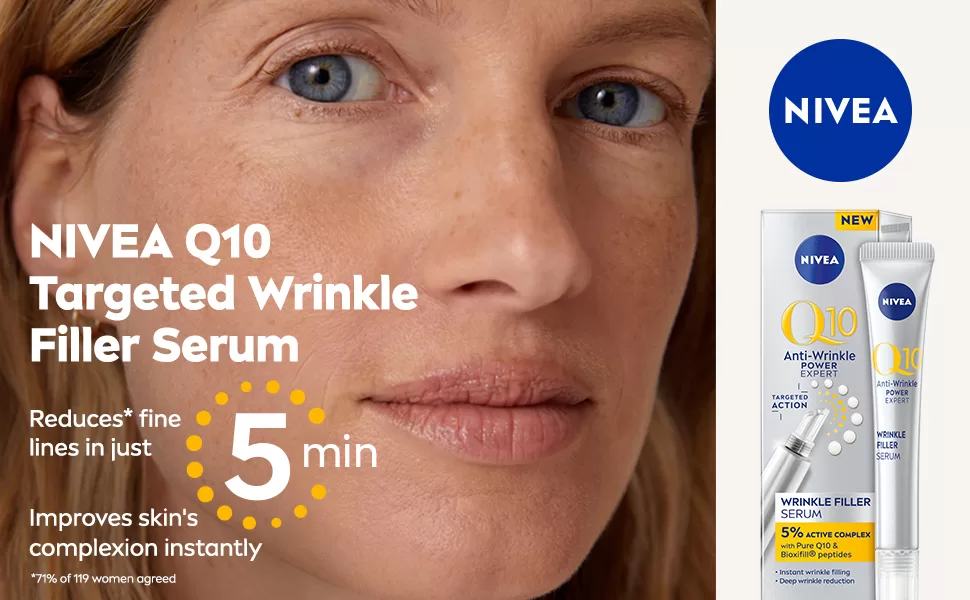
The Connection Between Sleep and Wrinkle Formation
When we think of wrinkle formation, sunlight and UV exposure typically top the list of culprits. However, did you know that sleep, or more specifically the way we sleep, plays a significant role as well?
How Sleeping Habits Contribute to Wrinkles
Each year, we spend approximately 2,500 hours asleep. During this time, pressing your face against a pillow can exacerbate the formation of wrinkles. This repetitive pressure causes the skin to fold, similar to how a piece of fabric wrinkles under weight, leading to deeper lines over time.
The Science Behind Sleep Wrinkles
The constant pressure from sleeping on your side or stomach can deepen “smile lines” or “marionette lines.” These are the creases that extend from the nostrils down to the corners of the mouth. With every smile or laugh, these lines naturally appear, but pressing your face into a pillow can make them more pronounced even when you’re not smiling.
Tips to Minimize Sleep-Induced Wrinkles
- Try Back Sleeping: This position helps keep your face lifted off the pillow, preventing unnecessary pressure.
- Invest in Silk Pillowcases: They cause less friction, which can reduce the tugging at your skin.
- Use a Supportive Pillow: Consider ergonomic pillows that cradle your head without pressing into the lower half of your face.
By adopting smart sleeping habits, you can help minimize the impact sleep has on wrinkle formation and maintain smoother, more youthful-looking skin.
Related Article:
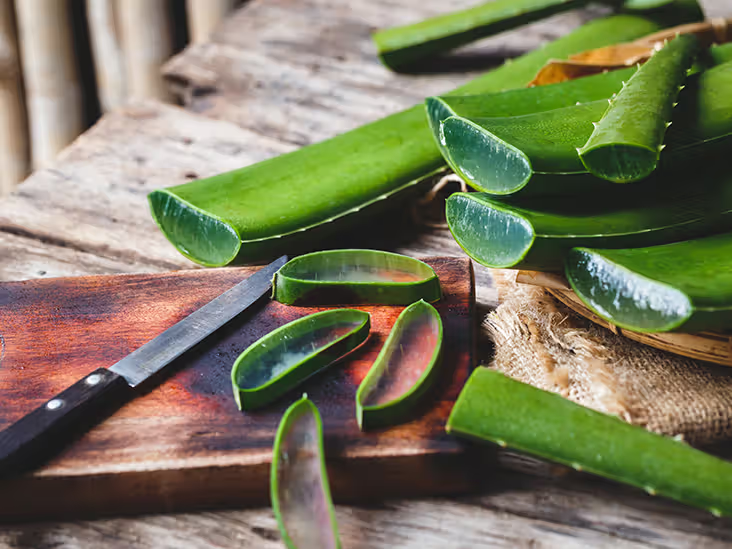
The Complete Guide to Natural and DIY Skincare: Safe and Effective Home Remedies for Glowing Skin
Effective Natural and DIY Skincare Recipes Using Aloe Vera, Honey, and Essential Oils More and more people are turning away from store-bought skincare and embracing natural, DIY options. The appeal is clear: safe, simple, and often cheaper ingredients that you can find right in your kitchen. Stars like aloe vera, honey, and essential oils are…

Explore more articles like this @ Where And How Resources



